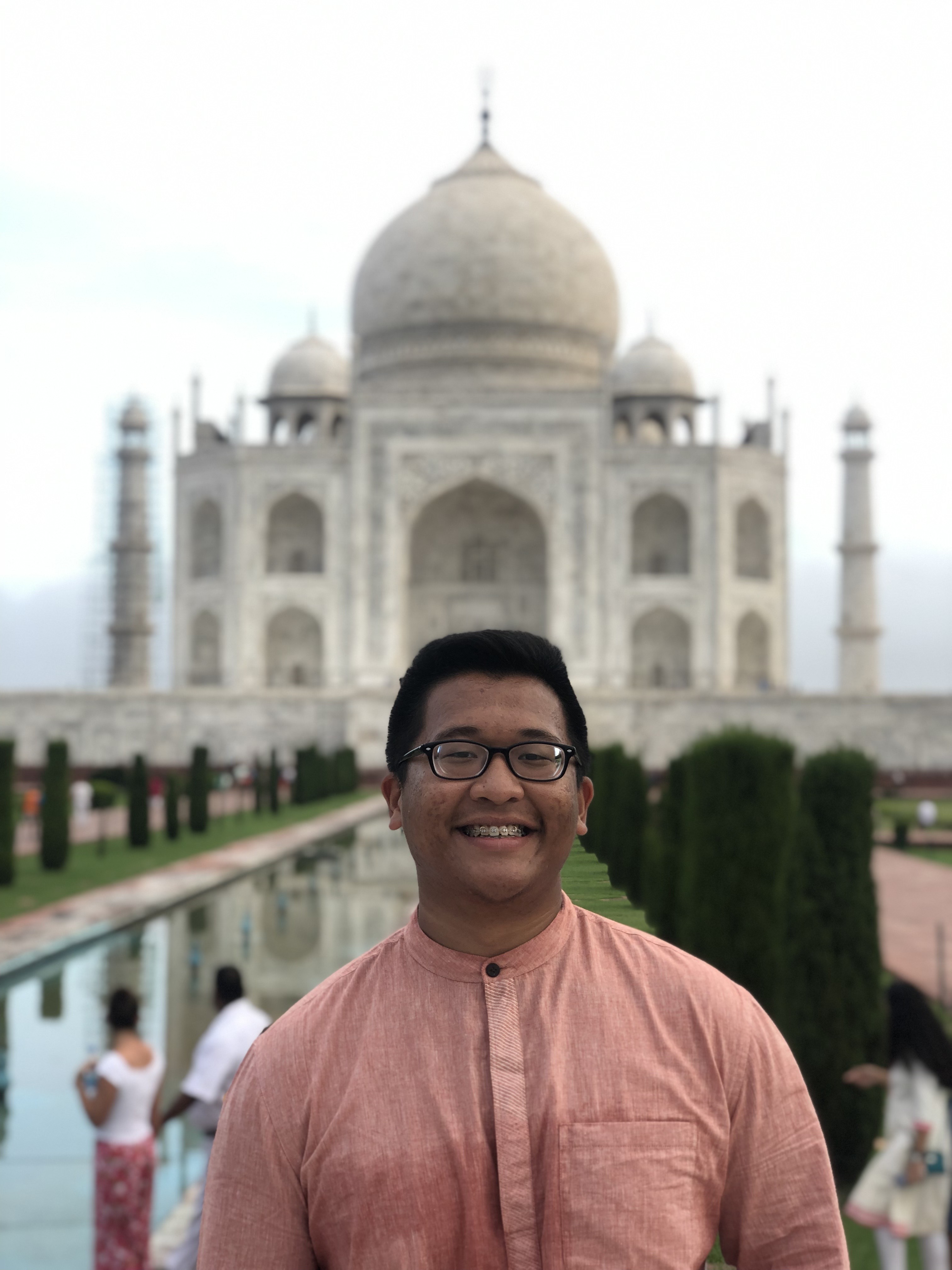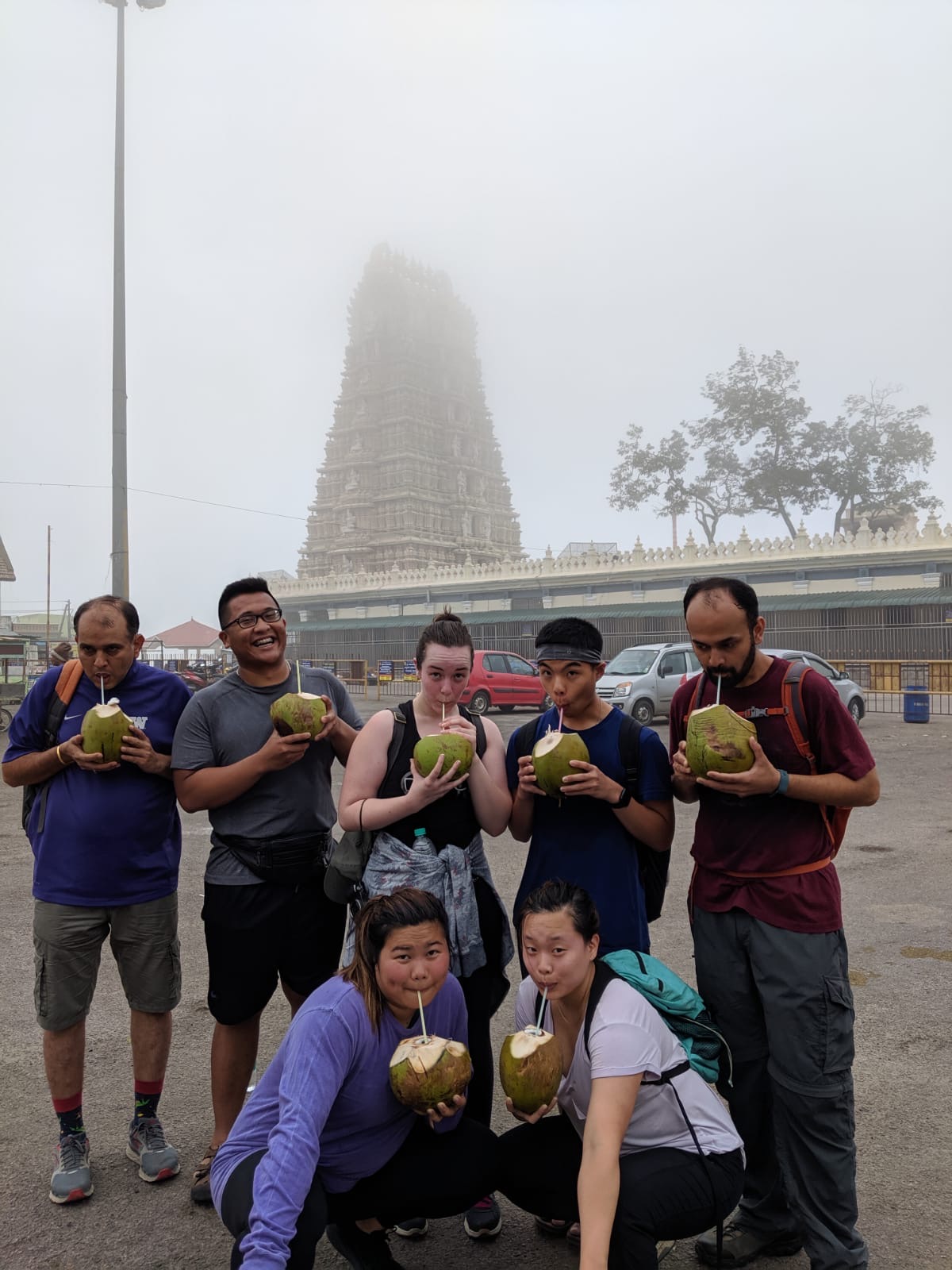Business India 2019
Guest post by: Toan Nguyen is a Senior studying Finance and Information Systems. This Summer, Toan participated in a UW Foster Exploration Seminar Business India.
Abhinav Gupta a professor from the Foster School of Business and Andrea Pesola a staff coordinator took a group of students to travel throughout 8 different cities within India to immerse ourselves in India’s centuries’ old culture, traditions and economy. We visited 10 different non-profit organizations that tackled different issues within the Indian society and as students tried to and analyze the contrast of the different norms of business, norms of behavior, and the caste system on daily life. From this study abroad, it allowed students to challenge their way of thinking of how to tackle problems that was bugger but also had many layers to it because in India, the caste system is so dominant, and the amount of people is large.
Before arriving in India, we listened to a lecture from professor Gupta about the diverse history of India to prepare us to fully comprehend everything we would see in the following three weeks. We also read “City of Djinns: A Year in Delhi” by William Dalrymple, “The Nine Lives: In Search of the Sacred in Modern India” by William Dalrymple, and “The Annihilation of Caste” by B. R. Ambedkar to prepare us for the discussions that we would have in India after traveling to different cities and interacting with people in different castes. During our three weeks in India, most days started early and before the sun rises and of course with some minor complications. We would brush our teeth with bottled water, drink bottle water at restaurants, and learn to adapt to the heat of roughly 100 degrees.
India was much more than a class; we were able to learn in an experiential setting compared to a traditional setting. One experience to highlight was when we visited the Taj Mahal. Scheduled to leave the hotel at 5AM to go to the Taj Mahal, two students did not make it into the bus until it was 5:20AM, risking the group leaving the two stragglers behind. Fortunately, everyone successfully made onto the bus as we drove to the Taj Mahal and prepared to go inside. Once through security check, we walked to the entrance with our tour guide.
He gave us a brief history of how the entrance was built and a brief history of the Taj Mahal. The entrance of the Taj Mahal was only built last year and once we were given instructions on where to meet, we were given 10 minutes free to walk inside. All of us walked in together and what I witnessed inside explained to me why the Taj Mahal is considered one of the seven wonders of the world.
The mausoleum that we saw was made out of white marble and at any given inch, there could be hundreds of different gemstones made to fit perfectly to form the beautiful designs. As we walked in, even though it was only 6AM there were already thousands of other tourists. We were able to explore and take pictures quickly before forming as a group to learn about why the Taj Mahal was built.
The Taj Mahal was built by Shah Jahan which is the fifth king in the Mughal empire. In Shah Jahan’s life he had three wives, but it wasn’t until the third wife that was able to give him the children that he wanted. The third wife’s name was Mumtaz Mahal, in her lifetime she gave birth to 14 children but unfortunately, she died giving birth to her last baby. It was a tradition for royalty to plan their own tombs, but since Mumtaz died early, she was unable to plan her burial. With the love that Shah Jahan had for his third wife, he ordered the construction of the Taj Mahal to symbolize the love that Shah Jahan had for his wife.
Furthermore, to the left of the Taj Mahal there is a mosque facing west towards Mecca. The Mosque took seven years to build and the purpose was only to use it for a five-minute prayer before putting the casket below ground. For the sake of symmetry, there is also an additional mosque to the right of the Taj Mahal that was built but never used.The two-last structure within the premises of the Taj Mahal is the building to hide the water tanks that provide water to the elevated water tank that is referenced to the “Tank of Abundance” promised to the prophet Muhammad. The elevated water tank stretches from the gateway to the entrance of the Taj Mahal giving it a reflection of both the gate as well as the mausoleum. After learning about the Taj Mahal, we were able to walk inside the Taj Mahal to see the tomb replicas. There are two tombs inside of the Taj Mahal, one for the king Shah Jahan and one for the queen Mumtaz Mahal. The reason the king was buried next to the queen is because after Shah Jahan died, the third son that took over the empire did not want to spend money building more burials that cost a lot of money. So, he made an addition to the Taj Mahal by burying the king next to his queen.
Behind the Taj Mahal lies the Yamuna river that runs through the city of Agra. When walking on the Taj Mahal, there is a no shoe as well as a no picture policy. I like these two rules as it kept the Taj Mahal clean as well as it allowed me to really admire the details of what was inside the Taj Mahal.
After leaving the Taj Mahal, we all headed back to the hotel to eat one final breakfast as a group before making our way back to New Delhi. The drive back to New Delhi was a 4-hour drive, so professor Abhinav facilitated one final group discussion of the program.
Over the course of the program, we visited 10 different organizations ranging from nonprofit to for-profit. The discussion question simple, looking at the organizations we visited; Which organization would be able to serve the same purpose or improve of that what they are presently doing today if the organization changed from a nonprofit model to a for-profit model. In the 2-hour long discussion, we debated whether or not Parikrma, Akshaya Patra, HelpAge India, and MESH can continue to serve their same purpose as they currently are doing today while switching their model from a nonprofit to a for-profit model. We first talked about Parikrma, a nonprofit organization that provides high quality education to the poorest of the poor in India. When we visited them, they mentioned that they could not support all of the demand that they had for their school. So as a group, we discussed how they can continue to provide high quality education but in a for-profit model. Most students said that switching the model would not be viable since they would be shifting their intentions. On the contrary, one student proposed a model where students who are poor get an education now and pay for it later once they are able to acquire a good job through receiving Parikrma’s high quality education. Through this for-profit model, it incentivizes Parikrma to continue to provide a high quality education so that their initial investment into the students will pay off in the future. The discussion then shifted to talk about Akshaya Patra, a nonprofit organization that provide mid-day meals to government schools in India with the help of donors and government subsidies. The students were again asked to critically think on how Akshaya Patra can still provide mid-day meals but through being a for-profit company. Students debated how a for profit model could not adequately fulfill the same mission. However, one student brought up the point that a for profit model could work if the government put out an open auction for anyone who is able to provide meals at 12 rupees per meal or lower while still meting the nutritional requirements. The auction will allow open competition for firms to win the government contract if they can meet those requirements and make a profit at the same time. Then the discussion moved to HelpAge India, a nonprofit organization providing shelter and preventive care to poor elders. Some students brought up the point that since the elders are old and poor, it would be really difficult to have a model that can be profitable through taking care of these elders. However, a student mentioned that if HelpAge India was able to put the elders to work to either provide a product or service. The money that these elders make can be used to cover the costs of providing care and even make a profit. The last nonprofit that we talked about was MESH, an organization that sells ethically produced goods through meeting the 10 principles of the World Fair Trade Organization (WFTO) as well as providing equal employment opportunities to disabled people. The discussion was relatively simple as people mentioned that MESH can expand to more well-known retailers and using their reputation of being fair trade plus, there would be a demand for their goods. To wrap up the entire discussion and essentially the academic part of the whole study abroad in India, professor Abhinav had a few key takeaways. Abhinav wanted to teach us from the discussions throughout the whole trip the ability to think objectively about any topic. From culture, to organizations, and to even the caste system. He wanted us to practice our ability to think critically about any issue without incorporating our personal biases. Then if we believed that the argument we had was superior to the general consensus about any topics discussed throughout the trip, he wanted is to be able to articulate it in a way that showed why our argument was superior. I personally enjoyed the discussions throughout the whole trip, of understanding how to weigh out the pro and cons and objectively assess what my personal beliefs were against the group to see what I thought was right is actually correct. Overall, I learned how to be a better critical thinker from this trip and will carry this skill forward in my classes at Foster as well as the work force.
After getting to the hotel at 3pm, students had about three hours before the farewell dinner at 6PM. Some students relaxed at the pool, some went to work out, but most didn’t want to leave any second in Delhi wasted and went out to shop and explore the city one last time.


